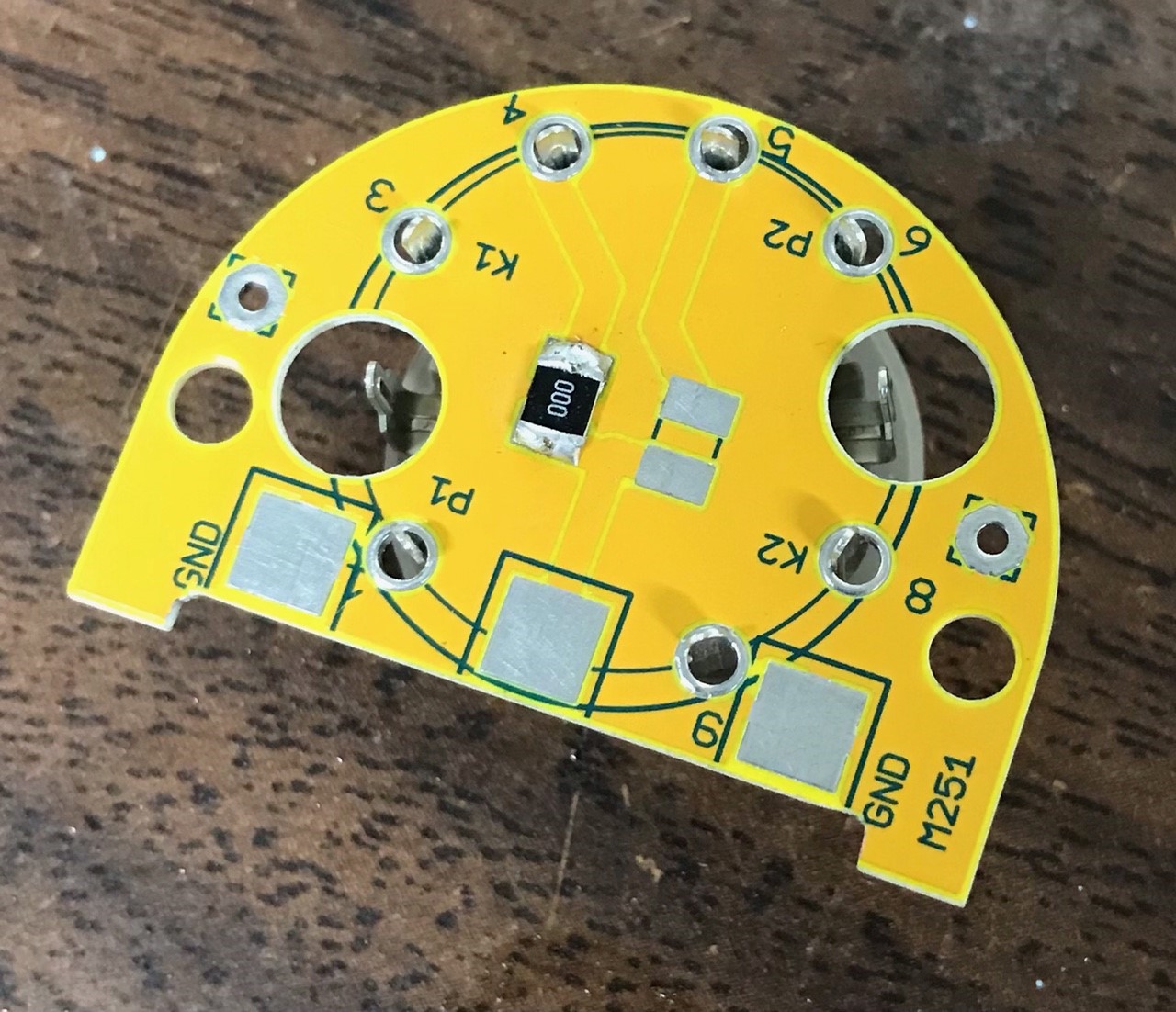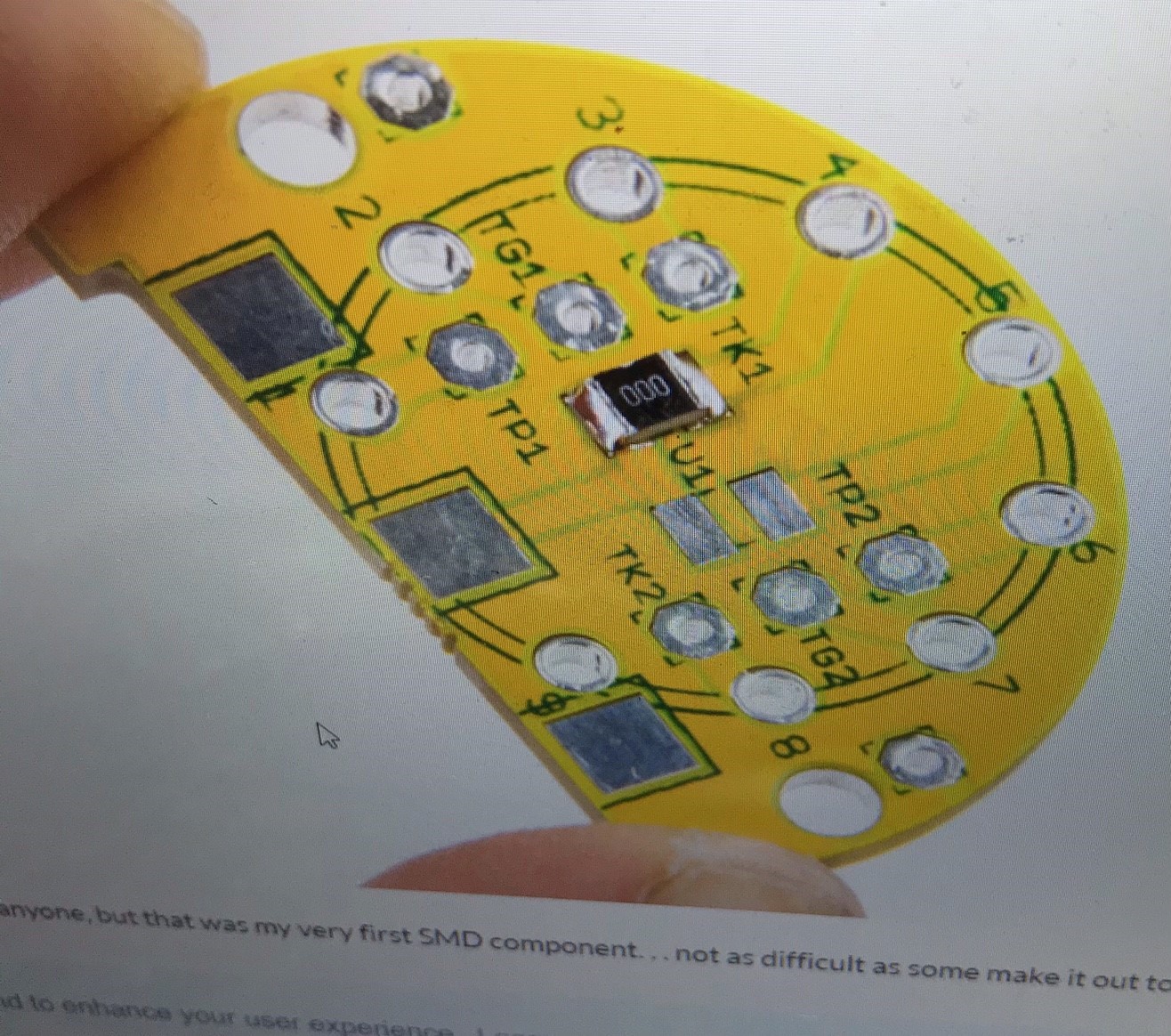Hello all. I finished this C12 build and the mic works fine, but I ran into a couple differences with the documentation that I'm hoping someone can help me understand.
1. All the voltage readings match the documentation except: when the mic is attached, the bias voltage is 0.03. And no amount of changing of the bias trim pot makes a difference in the voltage. Could something be connected incorrectly? Without the mic attached the bias voltage is -1.03, just like the documentation.
2. My PCB is different than what's in the documentation. I wonder if this impacts the issue I'm having with the bias voltage.
Here is what my PCB looks like:
And here is what it looks like in the documentation:
There is nowhere to solder pins 2 or 7 on the PCB. Similarly, the documentation says to solder the grid wire to TG1, but TG1 doesn't exist. Tracing the schematic, I see that TG1 on the old PCB goes to pin 2 of the tube, so I soldered the grid wire to pin 2 of the tube (I'm using that side of the tube; P1 and K1).
The mic works fine, but I would really like to know if there is a problem with the bias voltage and if it can be fixed. Is there something else I can test with the meter to track down the issue?
Thanks in advance for your help. I am fairly green when it comes to electronics, so I'm grateful for any assistance that can be provided.
Cheers,
Chris



































